On View
Artist Betty Tompkins Explains Why the Vile Words Used to Describe Women Are Worth Painting
The #MeToo movement helped inspire the artist's latest works.
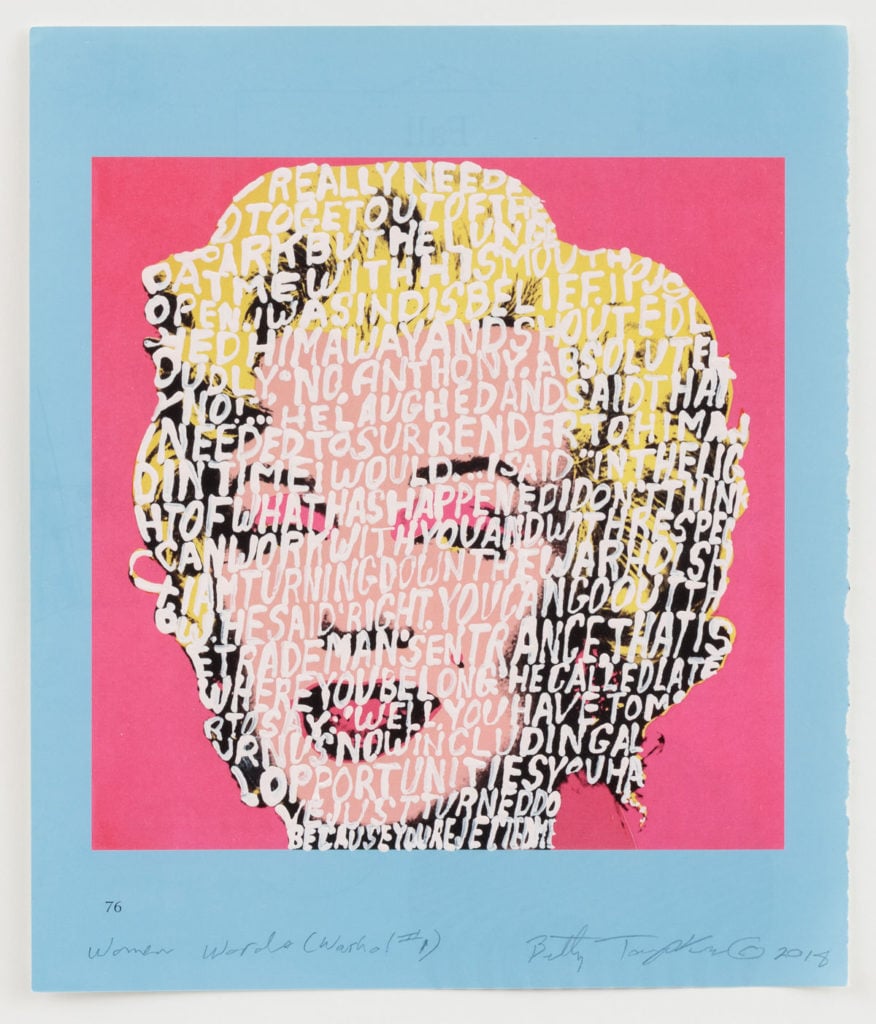
The #MeToo movement helped inspire the artist's latest works.

Sarah Cascone

After about 1,200 canvases, Betty Tompkins thought she had completely exhausted her “Women Words” series. But the emails kept coming.
The paintings—text works based on around 3,500 submissions from people around the world of phrases used to describe women—were originally completed between 2002 and 2015. But with more suggestions—the most common being “bitch” and “mother”—she gamely tried to continue.
But then, she was at an impasse. “I started throwing the paintings in the trash,” she told artnet News. “I like failing, but when you’re throwing ten consecutive pieces in the trash, that’s your mind’s way of saying ‘I’m not going to do this anymore.’ Done is done!”
The artist’s current exhibition, “Will She Ever Shut Up?,” at PPOW, her second at the New York gallery, is about what came next—and not just in the studio. The rise of the #MeToo movement, unleashed after the long-overdue condemnation of Hollywood producer and serial abuser Harvey Weinstein, figures prominently in the show. Now the artist’s work is filled not only with words about women, but also with the labored apologies issued by various men brought low by allegations of sexual misconduct.
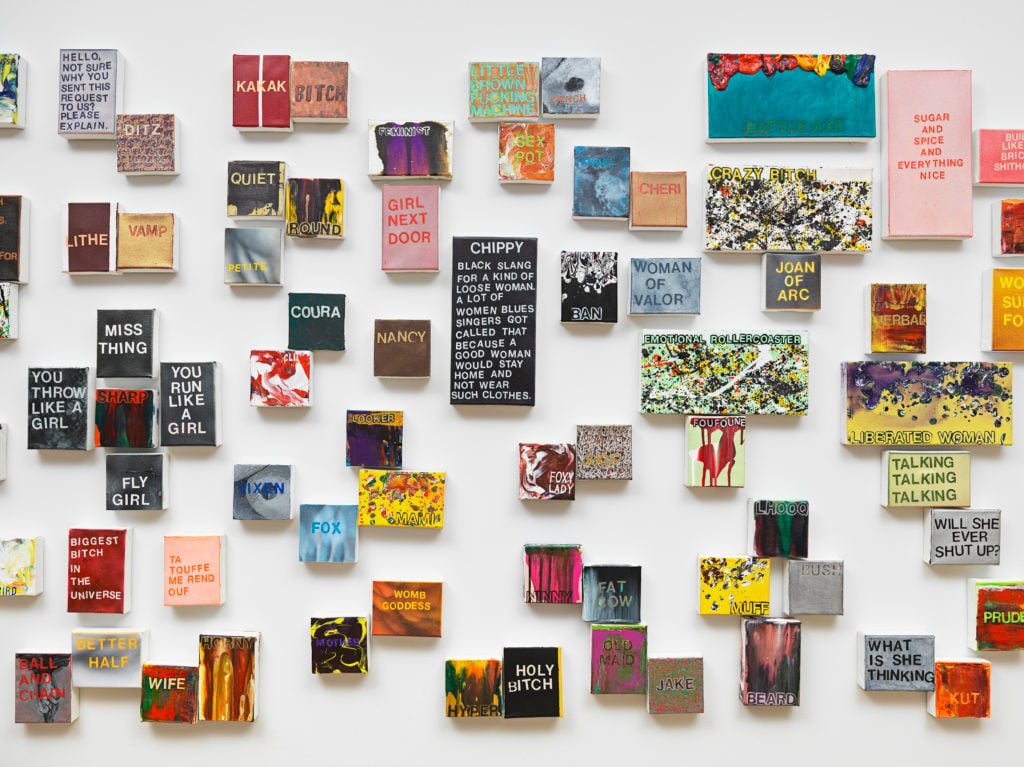
Installation view of “Betty Tompkins: Women Words, Phrases, and Stories” at the FLAG Art Foundation, New York (2016). Photo by Genevieve Hanson, ArtEcho LLC.
When the “Women Words” series was shown at the FLAG Art Foundation in New York in 2016 (and again later that year at Gavlak Gallery in Los Angeles), Tompkins set out a table with markers and index cards and invited people to write responses to the paintings. It wasn’t until a year after she stopped adding works to the series that Tompkins actually looked at the response cards.
“I was like, ‘oh my God, these are worse than the ones that I got the first time!'” she recalled. “They were really bad! I had left an awful lot on the table.”
Eventually, Tompkins returned to three works from 2013 done on pages torn from magazines with images that were practically softcore porn. One depicted a man in a car leering at a half-dressed woman, whose body Tompkins has covered in text. “I said, ‘Wow this is what I want! This is so creepy,’” she remembered.
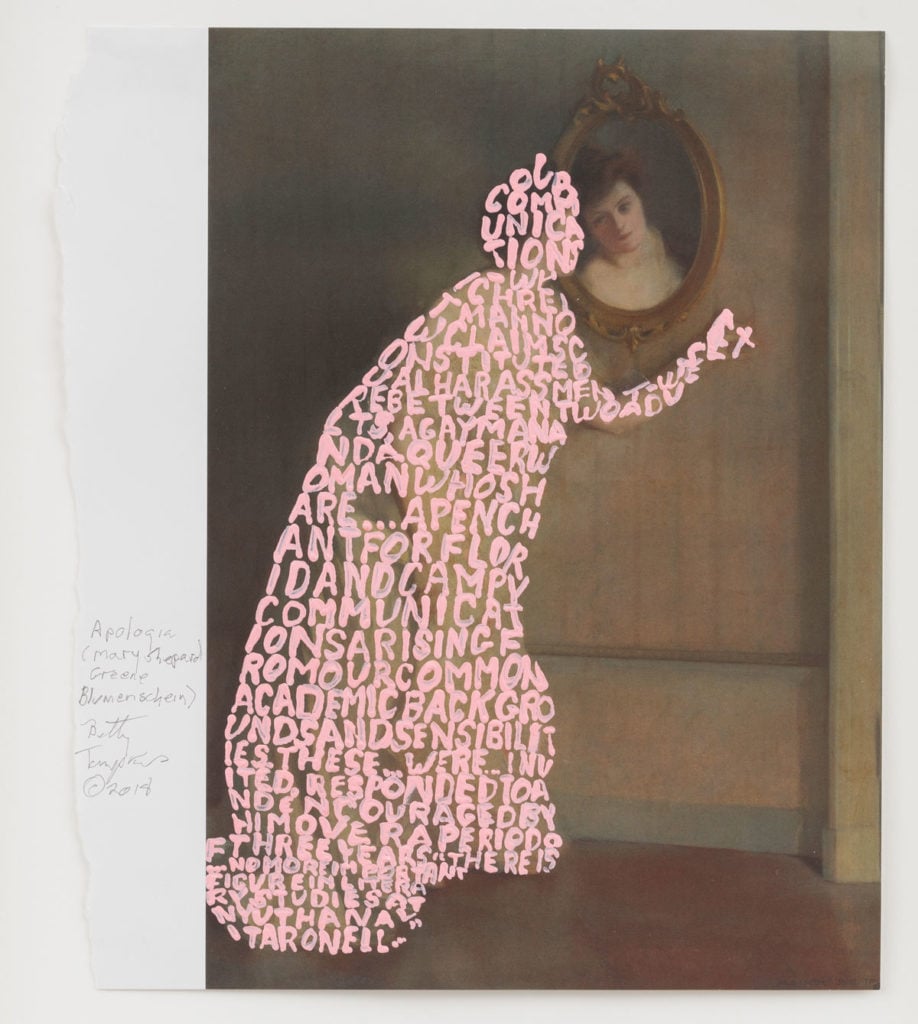
Betty Tompkins, Apologia (Mary Shepard Greene Blumenstein) (2018). Photo courtesy of PPOW.
The rediscovered works, precursors to the first “Women Words,” led to new ideas. Before long, Tompkins had bought more than 60 art history textbooks and was tearing out pages, unapologetically defacing some of the world’s best-known paintings and using female figures as canvases for unused suggestions for “Women Words.” “I come from a family where you couldn’t even crack the spine of a book, let alone tear out a page,” she recalled, admitting that “it was a lot of fun!”
She also added the apologies of men fingered for their mistreatment of women—including Matt Lauer, Chuck Close, and many others. “There’s no end to the idiot guys who have gotten away with things for years and years and now have to apologize—sort of,” Tompkins said. She dubbed the new series “Apologias.”
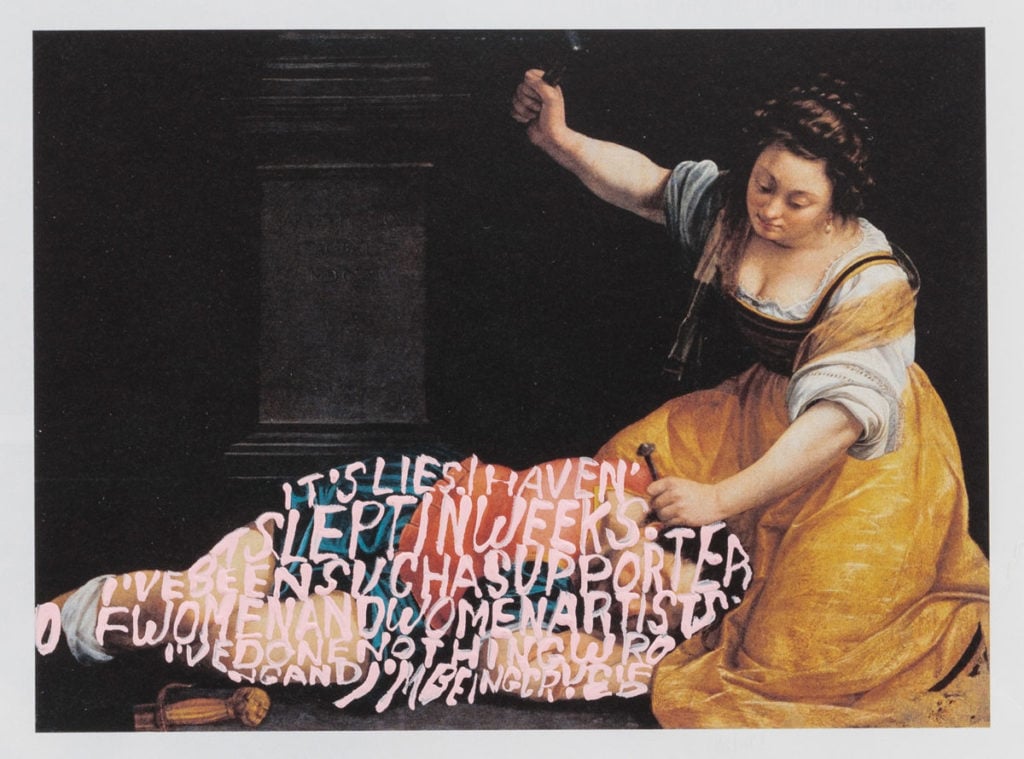
Betty Tompkins, Apologia (Artemisia Gentileschi #3), 2018. Photo courtesy of PPOW.
The original paintings are by the likes of Caravaggio, Lucas Cranach the Elder, and Artemisia Gentileschi, who has received renewed attention not only for her striking depictions of powerful women, but also for her fearless pursuit of justice after she was raped by her art teacher. Images by other, lesser-known female painters and photographers in the show include Judith Leyster, Angelica Kauffman, and Gertrude Käsebier.
The exhibition also features a series from the late 1970s and early 1980s in which Tompkins meticulously painted phrases lifted from the founding political documents of the United States atop the word “law,” printed over and over in a neat grid. It is work of madness-inducing precision.

Betty Tompkins, We the People… (1983). Photo courtesy of PPOW.
“I wanted to show that I worked with text and language from the beginning,” Tompkins said of its inclusion in the exhibition. Rounding out the show are new works that expand on her “Fuck Paintings” (1969–1974; reprised in 2003): larger-than-life, photorealistic depictions of genitals during sex acts. “My sex work wasn’t shown for almost 40 years,” Tompkins said. She is pleased that the national conversation has finally caught up with her work.
But don’t let that fool you: she doesn’t want to be provocative. “I think if you try to do work that is provocative, it will be lame,” Tompkins said. “I am not interested in paintings that are pleasant. I am not interested in nice-looking abstraction. I am interested in art that is tough and challenges me when I look at it.”
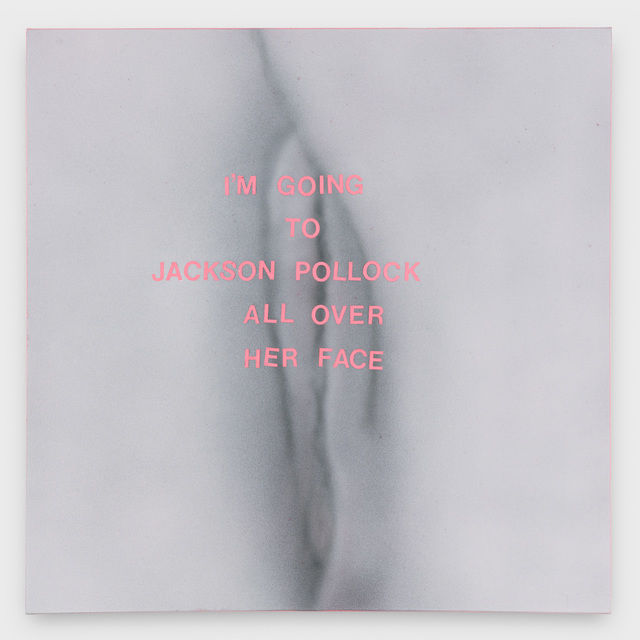
Betty Tompkins, I’m going to… (2018). Photo courtesy of PPOW.
Each new pornographic work has been airbrushed atop a pale pink background—“because pink is for girls—we all know this, right?”—with the images all based on photographs Tompkins has manipulated in Photoshop. One especially memorable piece features the extraordinarily crude statement that “I’m going to Jackson Pollock all over her face,” printed over a massive, almost O’Keeffe-like vagina.
“I’ve not inured myself to this language. You would think by now it wouldn’t really affect me,” Tompkins said. “But I’ve done some pieces where I’m crying because I feel so badly for the woman. I find them very moving.”
“Betty Tompkins: Will She Ever Shut Up?” is on view at PPOW, 535 West 22nd Street, New York, November 15–December 22, 2018.